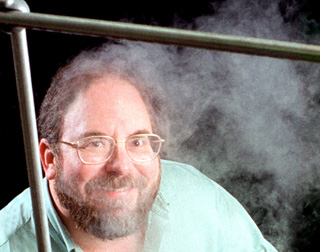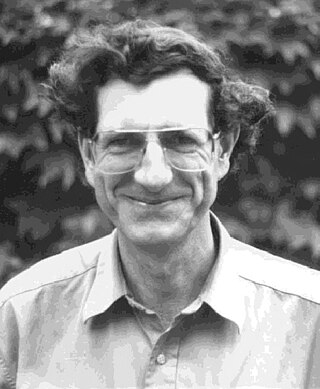Supramolecular chemistry refers to the branch of chemistry concerning chemical systems composed of a discrete number of molecules. The strength of the forces responsible for spatial organization of the system range from weak intermolecular forces, electrostatic charge, or hydrogen bonding to strong covalent bonding, provided that the electronic coupling strength remains small relative to the energy parameters of the component. While traditional chemistry concentrates on the covalent bond, supramolecular chemistry examines the weaker and reversible non-covalent interactions between molecules. These forces include hydrogen bonding, metal coordination, hydrophobic forces, van der Waals forces, pi–pi interactions and electrostatic effects.

In chemistry, a supramolecular assembly is a complex of molecules held together by noncovalent bonds. While a supramolecular assembly can be simply composed of two molecules, or a defined number of stoichiometrically interacting molecules within a quaternary complex, it is more often used to denote larger complexes composed of indefinite numbers of molecules that form sphere-, rod-, or sheet-like species. Colloids, liquid crystals, biomolecular condensates, micelles, liposomes and biological membranes are examples of supramolecular assemblies, and their realm of study is known as supramolecular chemistry. The dimensions of supramolecular assemblies can range from nanometers to micrometers. Thus they allow access to nanoscale objects using a bottom-up approach in far fewer steps than a single molecule of similar dimensions.

Molecular tweezers, and molecular clips, are host molecules with open cavities capable of binding guest molecules. The open cavity of the molecular tweezers may bind guests using non-covalent bonding which includes hydrogen bonding, metal coordination, hydrophobic forces, van der Waals forces, π-π interactions, and/or electrostatic effects. These complexes are a subset of macrocyclic molecular receptors and their structure is that the two "arms" that bind the guest molecule between them are only connected at one end leading to a certain flexibility of these receptor molecules.
Jean M.J. Fréchet is a French-American chemist and Professor Emeritus at the University of California, Berkeley. He is best known for his work on polymers including polymer-supported chemistry, chemically amplified photoresists, dendrimers, macroporous separation media, and polymers for therapeutics. Ranked among the top 10 chemists in 2021, he has authored nearly 900 scientific paper and 200 patents including 96 US patents. His research areas include organic synthesis and polymer chemistry applied to nanoscience and nanotechnology with emphasis on the design, fundamental understanding, synthesis, and applications of functional macromolecules.

Kenneth Norman Raymond is a bioinorganic and coordination chemist. He is Chancellor's Professor of Chemistry at the University of California, Berkeley, Professor of the Graduate School, the Director of the Seaborg Center in the Chemical Sciences Division at Lawrence Berkeley National Laboratory, and the President and Chairman of Lumiphore.

Egbert (Bert) Willem Meijer is a Dutch organic chemist, known for his work in the fields of supramolecular chemistry, materials chemistry and polymer chemistry. Meijer, who is distinguished professor of Molecular Sciences at Eindhoven University of Technology (TU/e) and Academy Professor of the Royal Netherlands Academy of Arts and Sciences, is considered one of the founders of the field of supramolecular polymer chemistry. Meijer is a prolific author, sought-after academic lecturer and recipient of multiple awards in the fields of organic and polymer chemistry.

Howard E. Zimmerman was a professor of chemistry at the University of Wisconsin–Madison. He was elected to the National Academy of Sciences in 1980 and the recipient of the 1986 American Institute of Chemists Chemical Pioneer Award.

Kenneth S. Suslick is the Marvin T. Schmidt Professor of Chemistry Emeritus at the University of Illinois at Urbana–Champaign. His area of focus is on the chemical and physical effects of ultrasound, sonochemistry, and sonoluminescence. In addition, he has worked in the fields of artificial and machine olfaction, electronic nose technology, chemical sensor arrays, and the use of colorimetric sensor arrays as an optoelectronic nose.

Didier Astruc carried out his studies in chemistry in Rennes. After a Ph. D. with professor R. Dabard in organometallic chemistry, he did post-doctoral studies with professor R. R. Schrock at the Massachusetts Institute of Technology Cambridge, Massachusetts, in the U.S. and later a sabbatical year with professor K. P. C. Vollhardt at the University of California at Berkeley. He became a CNRS Director of research in Rennes, then in 1983 full Professor of Chemistry at the University Bordeaux 1. He is known for his work on electron-reservoir complexes and dendritic molecular batteries, catalytic processes using nanoreactors and molecular recognition using gold nanoparticles and metallodendrimers. He is the author of three books, scientific publications and the editor of five books or special issues. He has been a member of the National CNRS committee from 2000 to 2008 and the President of the Coordination Chemistry Division of the Société Française de Chimie from 2000 to 2004. Didier Astruc is on the Thompson-Reuters list of the top 100 chemists who have achieved the highest citation impact scores for their chemistry papers published between 2000 and 2010. and on the list of the Highest Cited Researchers 2015 and 2016 (Thomson-Reuters). and 2017

Vincenzo Balzani is an Italian chemist, now emeritus professor at the University of Bologna.
Guillermo Carlos Bazan is an American chemist, material scientist, and academic.

Ayyappanpillai Ajayaghosh is a research scientist/academician in the domain of interdisciplinary chemistry, and the former Director of the National Institute for Interdisciplinary Science and Technology. He is known for his studies on supramolecular assemblies, organogels, photoresponsive materials, chemosensory and security materials systems and is an elected fellow of all the three major Indian science academies viz. the National Academy of Sciences, India, Indian National Science Academy and the Indian Academy of Sciences as well as The World Academy of Sciences. The Council of Scientific and Industrial Research, the apex agency of the Government of India for scientific research, awarded him the Shanti Swarup Bhatnagar Prize for Science and Technology, one of the highest Indian science awards for his contributions to Chemical Sciences in 2007. He is the first chemist to receive the Infosys Science Prize for physical sciences, awarded by the Infosys Science Foundation. He received the TWAS Prize of The World Academy of Sciences in 2013 and the Goyal prize in 2019.

Hiizu Iwamura is a Japanese chemist and Professor of Chemistry, Nihon University, as well as Professor Emeriti of the Institute for Molecular Science in Okazaki, the University of Tokyo, and Kyushu University in Japan.
A Beckman Fellow receives funding, usually via an intermediary institution, from the Arnold and Mabel Beckman Foundation, founded by Arnold Orville Beckman and his wife Mabel. The Foundation supports programs at several institutions to encourage research, particularly the work of young researchers who might not be eligible for other sources of funding. People from a variety of different programs at different institutions may therefore be referred to as Beckman Fellows. Though most often designating postdoctoral awards in science, the exact significance of the term will vary depending on the institution involved and the type(s) of Beckman Fellowship awarded at that institution.
Milan Mrksich is an American chemist. He is the Henry Wade Rogers Professor of biomedical engineering at Northwestern University and has additional appointments in chemistry and cell and developmental biology. He also serves as both the founding director of the Center for Synthetic Biology and as an associate director of the Robert H. Lurie Comprehensive Cancer Center at Northwestern. Mrksich also serves as the Vice President for Research of Northwestern University.

Stephen L. Craig is the William T. Miller Professor of Chemistry at Duke University. He is the director of the Center for Molecularly Optimized Networks, a NSF Center for Chemical Innovation.
Sankaran "Thai" Thayumanavan is an Indian-American chemist, who is currently a Distinguished Professor of Chemistry at the University of Massachusetts Amherst. He is known for his work in polymer chemistry. He is a Fellow of the American Association for the Advancement of Science (AAAS).

Guillaume De Bo is a Professor and a Royal Society University Research Fellow in the Department of Chemistry at the University of Manchester. His research is in the field of polymer mechanochemistry, where he investigates the chemistry of molecules under tension for application in synthetic chemistry, materials and mechanosensors.
Christopher William Bielawski is a distinguished professor at Ulsan National Institute of Science and Technology and group leader of the Synthesis Group in the Center for Multidimensional Carbon Materials. His research in synthesis and polymer chemistry has resulted in more than 290 publications and multiple patents.
Virgil Percec is a Romanian-American chemist and P. Roy Vagelos Chair and Professor of Chemistry at the University of Pennsylvania. Expert in organic, macromolecular and supramolecular chemistry including self-assembly, biological membrane mimics, complex chiral systems, and catalysis. Pioneered the fields of liquid crystals with complex architecture, supramolecular dendrimers, Janus dendrimers and glycodendrimers, organic Frank-Kasper phases and quasicrystals, supramolecular polymers, helical chirality, Ni-catalyzed cross-coupling and multiple living and self-interrupted polymerizations. Most of these concepts were inspired by Nature and biological principles.












